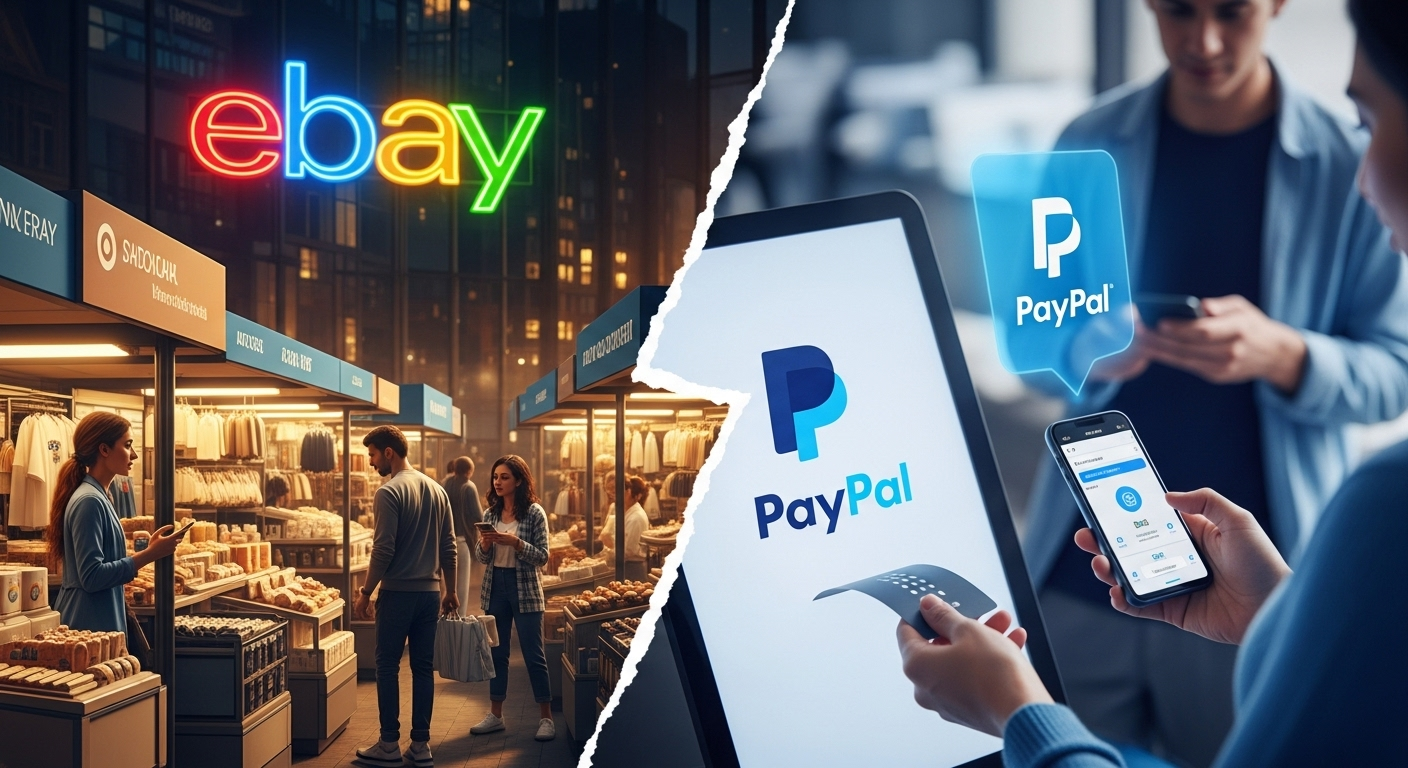The 2015 division of PayPal and eBay split was a momentous event in the history of e-commerce and digital payments. Those two giants that once had a symbiotic relationship had chosen to go it alone and rewire the digital payment and online retail markets. The move was so unexpected that it stunned many in the tech and business world, and led to questions about why the split occurred, who benefited, and what challenges both companies now face.
This is an in-depth analysis of why eBay and Paypal have been separated – we review the strategic, financial, and operational consequences of the split. We’ll also spotlight the longer-term effects on businesses, investors and consumers.
Understanding the History: How eBay and PayPal Became a Power Duo
Before we get into the split however, it’s important to understand where the relationship began. EBay bought PayPal in 2002 for $1.5 billion to streamline and secure payments on its auction site. At the time, PayPal’s technology provided an important solution to eBay sellers: how to receive and send payments easily.
Eventually, PayPal was adopted across eBay and became the dominant way to pay, processing millions of transactions. But as PayPal expanded, its dreams surpassed just eBay. It started working to integrate with other merchants, to expand internationally, and to pour money into mobile and peer-to-peer payment technologies — endeavors that frequently seemed less to do with eBay’s businesses than with what everyone else was thinking about or investing in at the time.
Strategic Shift: Why Did PayPal and eBay Split?
The breakup of eBay and PayPal didn’t happen overnight. It was the result of a convergence of strategic and market pressures:
1. Need for Independent Growth Strategies
The company’s chief executive at the time, Dan Schulman, said the company needed to be independent to compete with a new wave of fintech competition, led by companies like Stripe, Square and Apple Pay. Above all, by existing as an entity on its own, PayPal could cut deals and innovate without being shackled to eBay’s marketplace-first mentality.
2. Investor Pressure and Market Trends
The investor Carl Icahn helped to drive the split. Both companies, he said, would realize more shareholder value and grow more quickly by remaining separate entities, particularly given how quickly the fintech market was changing.
3. Changing E-commerce Landscape
As the eBay marketplace grew up and expanded around the world, the company needed more flexibility to get the service to work with multiple payment providers. PayPal, on the other hand, aimed to grow its footprint by offering services to a number of e-commerce platforms that competed with eBay.
Read: Capital One Quicksilver vs Savor: Which Credit Card Is Better?
Benefits of the PayPal and eBay Split
Although there were inherent risks, the choice had a number of benefits for both companies:
Enhanced Innovation for PayPal
After the separation, PayPal was able to scale without limit. It ventured into verticals such as mobile payments, cryptocurrency and buy now, pay later (BNPL) services. Acquisitions like Venmo, Honey and iZettle added even more power to its fintech ecosystem.
Strategic Flexibility for eBay
eBay earned the added flexibility of having multiple payment partners, and lead to the launching of eBay Managed Payments system through Adyen. This model enabled lower seller fees, a better buyer checkout experience, and more direct ownership of transactional data.
Increased Shareholder Value
Shares popped for both companies in the wake of the split. The market has rewarded their lack of dependence, and each company has found its own set of new investors based on separate growth stories.
Challenges After the Separation
There were some good things, for sure, but the split added some risk and complexity as well:
Disruption in Payment Experience
For years, eBay users had grown used to the frictionless transactions that PayPal provided. The move to new payment systems caused confusion, gripes and a short-term drop in user satisfaction.
Operational Complexity
Decoupling two giant platforms required extensive backend reconfiguration, data migration and a shakeup and reshaping of existing SLAs but business continued to hum.
Competitive Threats
PayPal now faced the direct competition of all kinds of e-commerce payment systems that had once looked out of bounds. eBay, meanwhile, had to construct and fine-tune its own payments architecture, starting from just about zero.
eBay’s Managed Payments and the Decline of PayPal Reliance
After the split From the time of the plan to part ways, eBay has since been moving on its own to gradually roll out the in-home payment processing in partnership with Adyen. This change enabled eBay to provide more payment options, streamline seller fees, and gain greater control over the customer checkout experience.
For sellers, this translated to reduced expense and diminished reliance for appeal on PayPal’s separate rules and dispute procedures. For PayPal, it was a blow to transaction volume — after all, eBay completed just over $1 trillion in transaction volume in the year ending June 2021 — especially since eBay would not fill the gap because it fully unwound PayPal as its lead processor by mid-2021.
Impact on the Digital Payment Ecosystem
The PayPal and eBay divide was mirrored by larger changes in fintech and e-commerce:
- Rise of platform-agnostic services: Companies are looking for more flexible and platform-agnostic payment options.
- Data ownership becomes key: Both firms have a more strategic control of their data pipelines, and rely on first-party insights to fuel personalization and growth.
- Evolving consumer expectations: With the likes of Apple Pay, Google Pay and BNPL now a given, neither firm has ever been able to rest on its laurels.
Conclusion
The eBay-PayPal breakup was a well thought out strategy based on the need of strategic independence and expansion. There were pros and cons to the change, but by and large things worked out, and each company thrived based on who it was. PayPal continued to execute on its vision of being the world’s leading digital finance platform and eBay returned to focus on offering its customers flexibility with the most relevant payment options.
As tech and finance continue to march forward, the PayPal-eBay split represents a kind of case study in how cleaving large entities may in fact be the fastest route to innovation, agility and long-term success.
FAQs
1. When did PayPal and eBay officially split?
The formal split happened on July 20, 2015, when PayPal was spun off into a separate independent publicly traded company.
2. Why did PayPal and eBay decide to split?
Consideration was made based on a strategic independence, competitive growth, and market pressure to deliver more shareholder value.
3. Is PayPal still available on eBay?
That’s true, but not as the default processor. eBay now leans heavily on Managed Payments, although it’s still possible to opt for PayPal at checkout.
4. Who benefitted more from the split—eBay or PayPal?
PayPal, with growth and diversification, arguably made out even better. It branched out into new markets and technologies that would have been challenging under eBay’s wing.
5. What alternatives did eBay use after the split?
eBay entered into an agreement with Adyen, a leading global payments platform, to immediately begin developing its own payment processing system in which eBay, instead of PayPal, will manage payments on its Marketplace platform under the name eBay Managed Payments.



